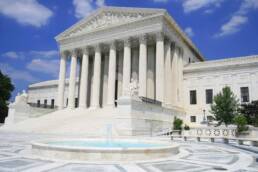The E-2 nonimmigrant classification allows a national of a treaty country to be admitted to the United States when investing a substantial amount of capital in a U.S. business. Certain employees of such a person or of a qualifying organization may also be eligible for this classification.
To qualify for an E-2 visa, the treaty investor (whether a business or individual) must:
- Be a national of a country with which the United States maintains a treaty of commerce and navigation;
- Have invested, or be actively in the process of investing, a substantial amount of capital in a bona fide enterprise in the United States; and
- Be seeking to enter the United States solely to develop and direct the investment enterprise (this is established by showing at least 50% ownership of the enterprise or possession of operational control through a managerial position or other corporate device).
Substantial Investment Requirement
The purpose of the substantial investment requirement is to ensure that the business being invested in is not speculative, but rather is – or will soon be – a successful enterprise. Importantly, there is no predefined minimum amount that qualifies as a “substantial” investment for E-2 visa purposes. Rather, to be considered substantial, an investment must meet the following criteria:
- The investment must be substantial in a proportional sense, as determined through the application of the proportionality test outlined below;
- The investment must be sufficient to ensure the treaty investor’s financial commitment to the successful operation of the enterprise; and
- The investment must be of a magnitude to support the likelihood that the treaty investor will successfully develop and direct the enterprise.
The proportionality test assesses the substantiality of an investment by comparing the amount of qualifying funds invested with the total cost of the business. An investment that equals the business’s total cost, thereby constituting 100% investment, is typically viewed as substantial. For an established business, this amount is usually its purchase price or fair market value. In the case of a new business, the total cost of the business refers to expenses required for it to become operational.
However, in many cases, the investor’s investment represents a lower percentage of the total cost of the business. This is where the proportionality test is particularly relevant. The test functions like an inverted sliding scale: the lower the total cost of the business, the higher the percentage of investment required. In contrast, a business with a higher total cost demands a lower percentage of qualifying investment.
For example, consider an investor starting a new U.S. company with total overhead costs of $60,000. In this scenario, a much higher percentage of investment is needed due to the relatively low total cost of the company. The investor would likely need to invest the full $60,000, or as close to that amount as possible. Conversely, an investment of $10 million in a $100 million business may also be considered substantial, given the sheer magnitude of the investment itself.
Ultimately, whether an investment is deemed substantial depends on satisfying the three key criteria outlined above. The investment must be substantial in relation to the business’s total cost, sufficient to commit the investor financially to the enterprise, and significant enough to enable the investor to effectively develop and manage the business. If these conditions are met, the investment is typically considered substantial.
Contact Berardi Immigration Law today for more info – we’d love to help.
Ready to have Berardi on your side?
Whether you’re a business looking to hire or a professional hoping to relocate, immigration law can be complicated. But you don’t have to do it alone. Put our experience to work for you.



